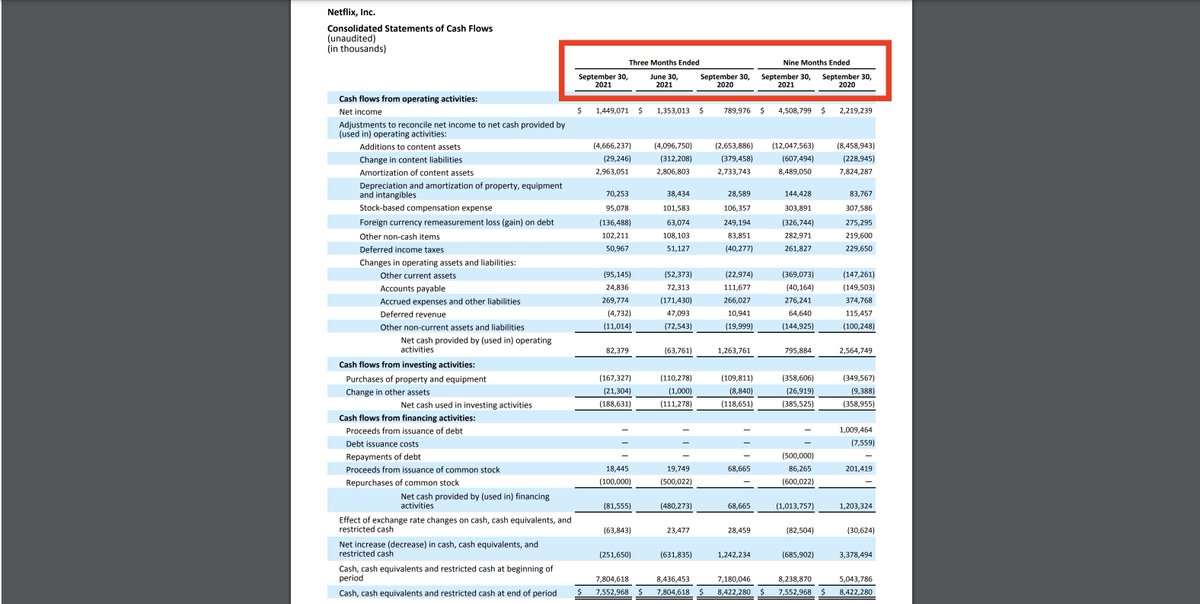
How to survive a market crash:
1. Financially Prepare
Focus on your personal balance sheet first:
✔️Eliminating all debt
✔️Emergency Fund
✔️High savings rate
✔️Multiple income sources
Dealing with declines is SO MUCH EASIER when your personal finances are bullet-proof
Focus on your personal balance sheet first:
✔️Eliminating all debt
✔️Emergency Fund
✔️High savings rate
✔️Multiple income sources
Dealing with declines is SO MUCH EASIER when your personal finances are bullet-proof
How big of an emergency fund?
That depends on your personal circumstances
Here’s one way to think about it:
That depends on your personal circumstances
Here’s one way to think about it:

2. Study market history
The stock market drops on average:
🔽 10% every 11 months
⬇️ 20% every 4 years
⏬ 30% every decade
⏬ 50% a few times in a lifetime
Declines are nothing new. They are a normal part of stock investing.
The stock market drops on average:
🔽 10% every 11 months
⬇️ 20% every 4 years
⏬ 30% every decade
⏬ 50% a few times in a lifetime
Declines are nothing new. They are a normal part of stock investing.
Bear market happen fast and they always suck to live through.
But, bear markets clear the way for bull markets to start
Missing out on bull markets is a bigger mistake than holding through a bear market
But, bear markets clear the way for bull markets to start
Missing out on bull markets is a bigger mistake than holding through a bear market

3: Time horizon
Ask:
▪️What are you investing for in the first place?
▪️When do you need the money?
Is it for retirement that is decades away? Declines shouldn't worry you!
Is it to fund a purchase in <3 years? This money shouldn't be in the stock market!
Ask:
▪️What are you investing for in the first place?
▪️When do you need the money?
Is it for retirement that is decades away? Declines shouldn't worry you!
Is it to fund a purchase in <3 years? This money shouldn't be in the stock market!
4: Move forward & backward in time
Pretend it's 5 years from now.
Ask: How scary does market volatility in Q4 2021 seem?
Does the drawdown of Q4 2018 seem scary now?
How about Q1 2016?
Did you even remember those past drawdowns?
Pretend it's 5 years from now.
Ask: How scary does market volatility in Q4 2021 seem?
Does the drawdown of Q4 2018 seem scary now?
How about Q1 2016?
Did you even remember those past drawdowns?
5: Create guard rails
▪️Build in a cool-down period for decision making
▪️Create a lifetime asset allocation plan
▪️Make decisions on the weekends
Here's my current lifetime asset allocation plan:
▪️Build in a cool-down period for decision making
▪️Create a lifetime asset allocation plan
▪️Make decisions on the weekends
Here's my current lifetime asset allocation plan:

Have some cash that you are looking to deploy?
Create rules for yourself
@morganhousel's cash strategy is a useful guide
For every $1,000 he has set aside, he invests this often:
Create rules for yourself
@morganhousel's cash strategy is a useful guide
For every $1,000 he has set aside, he invests this often:

Another solution to the “should I invest now?" dilemma:
1️⃣Invest a little bit now
2️⃣Schedule future investments in 1-month increments
3️⃣If the market drops 5%, invest next the monthly increment early
4️⃣If the market is flat/up, stick to the monthly schedule
1️⃣Invest a little bit now
2️⃣Schedule future investments in 1-month increments
3️⃣If the market drops 5%, invest next the monthly increment early
4️⃣If the market is flat/up, stick to the monthly schedule
7: Avoid margin & options
Handling the emotional swings of common stock ownership is hard enough.
Those swings get much, much wilder when you use margin and/or options.
Compounding interest is all the leverage you need.
Handling the emotional swings of common stock ownership is hard enough.
Those swings get much, much wilder when you use margin and/or options.
Compounding interest is all the leverage you need.
8: Journal
Force yourself to journal BEFORE you transact
Write down why you are taking an action before you take it. Include your current feelings of greed/fear.
This will serve as a wonderful resource later for learning from your own mistakes.
Force yourself to journal BEFORE you transact
Write down why you are taking an action before you take it. Include your current feelings of greed/fear.
This will serve as a wonderful resource later for learning from your own mistakes.
9: Community
I rarely get upset by market movements, but when I do I look to talk to other investors with a similar time horizon
Fintwit
@TheMotleyFool
@MicroCapClub
Staying calm is so much easier when you surround yourselves with like-minded investors
I rarely get upset by market movements, but when I do I look to talk to other investors with a similar time horizon
Fintwit
@TheMotleyFool
@MicroCapClub
Staying calm is so much easier when you surround yourselves with like-minded investors
Enjoy this thread?
I regularly tweet about money, investing, and mindset
If those topics interest you, follow me @brianferoldi
I regularly tweet about money, investing, and mindset
If those topics interest you, follow me @brianferoldi
Want to learn more about investing?
I teach beginners how to invest better on my YouTube Channel
Subscribe here:
youtube.com/brianferoldiyt…
I teach beginners how to invest better on my YouTube Channel
Subscribe here:
youtube.com/brianferoldiyt…
Summary:
1. Financially Prepare
2: Study Market History
3: Time horizon
4: Move forwards & backward in time
5: Create guard rails
6: Dollar-cost average
7: Avoid margin & options
8: Journal
9: Community
1. Financially Prepare
2: Study Market History
3: Time horizon
4: Move forwards & backward in time
5: Create guard rails
6: Dollar-cost average
7: Avoid margin & options
8: Journal
9: Community
• • •
Missing some Tweet in this thread? You can try to
force a refresh







